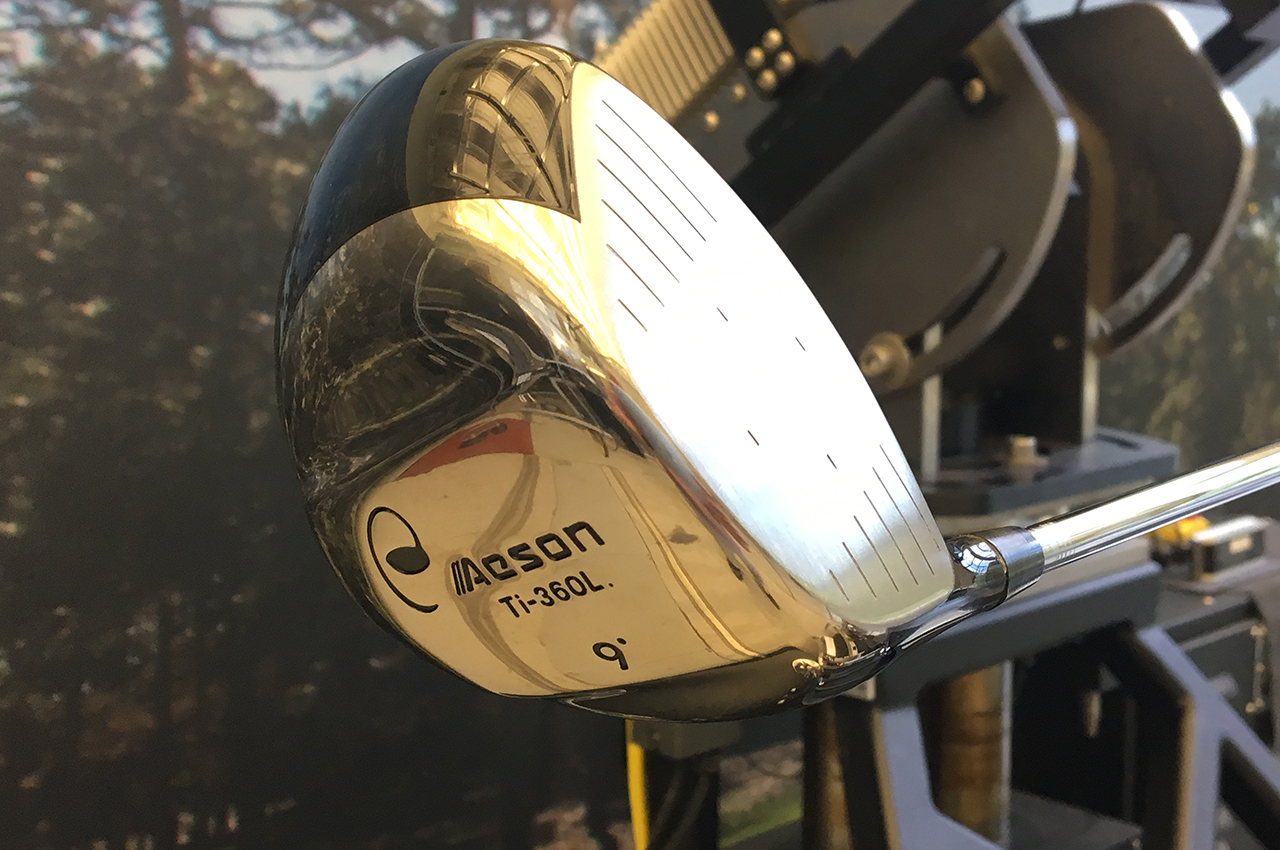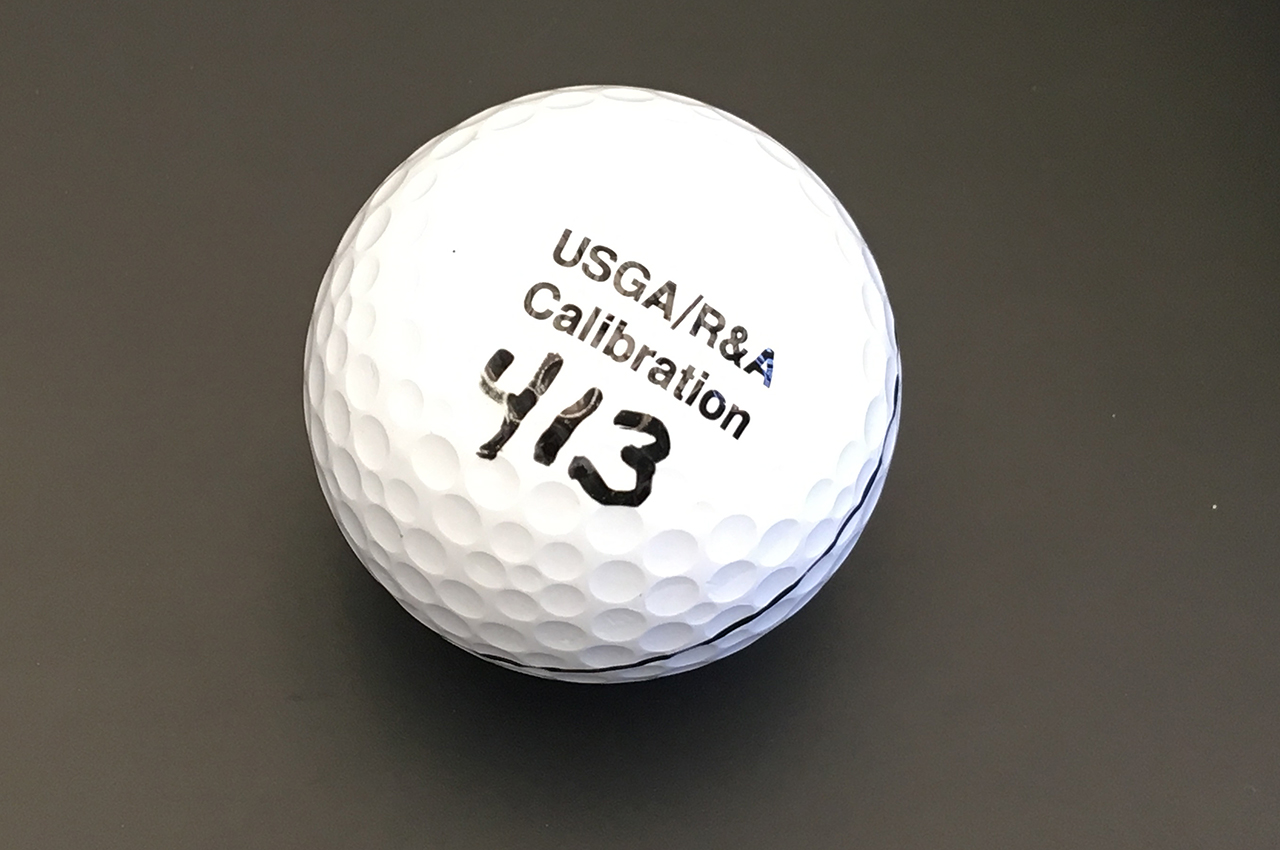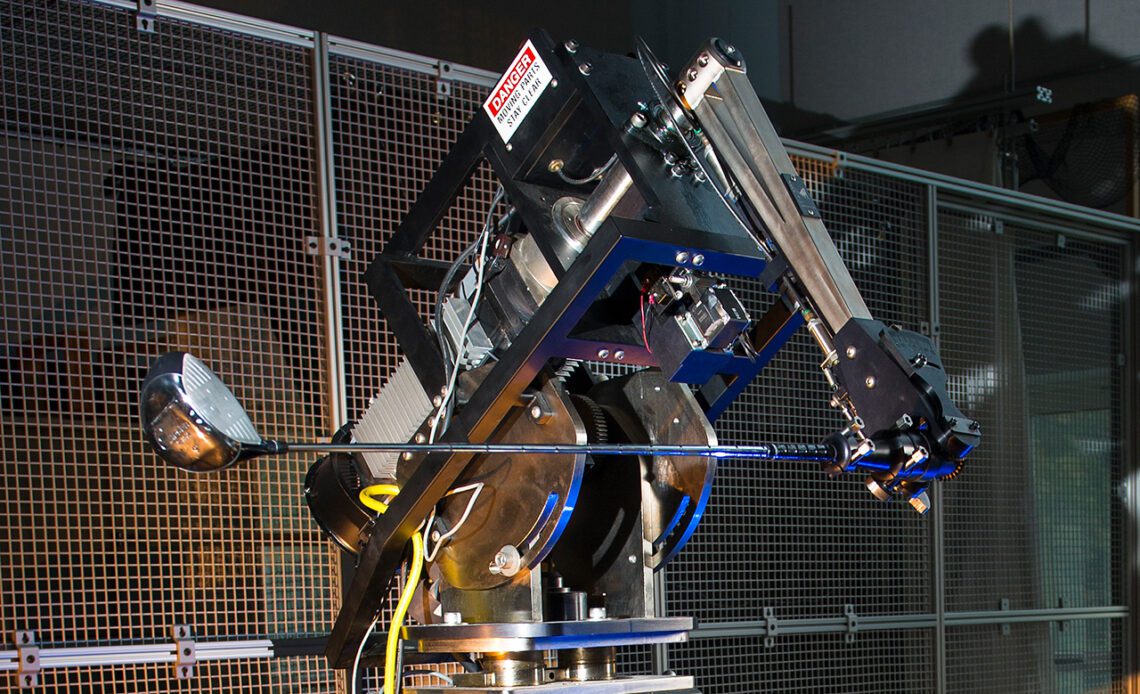[the_ad id="4004"]
[ad_1]
The USGA’s golf robot swings a test club at exactly the speed technicians want. (USGA)
If the prototype balls pass the size, weight and shape tests, they are tested to see if they stay within the Overall Distance Standard. By rule, no golf ball can travel more than 317 yards when tested, plus an extra three yards for testing tolerance, making the actual distance limit in the tests 320 yards.
Two tests are performed to gather data and measure if a ball conforms to the Overall Distance Standard limits. The first test involves a robot affectionately called Iron Rugge, an homage to Dick Rugge, the USGA’s longtime senior technical director who retired in 2013. Before testing prototype balls, the robot swings a test driver specially made for the USGA tests and hits a series of balls that were produced for calibration.
“We went to manufacturers and said look, we want to have a standard club and a standard ball to do our testing, and we want to have it be available to anybody that wants to mimic the ball testing being done by the USGA,” said John Spitzer, the USGA’s managing director of equipment standards. “We asked the manufacturers if they would be willing to provide clubs and no one wanted to provide clubs for us, so we went to Fusheng (a Chinese company that is the largest golf clubhead manufacturer in the world).”

Fusheng made the driver used in the USGA’s golf ball tests. (David Dusek/Golfweek)
Fusheng produced a driver specifically for USGA testing, but it is available to anyone who wants to buy one. The titanium club has a 360-cubic-centimeter volume, and while that is smaller than today’s drivers, the size is irrelevant because, unlike us, the robot always hits the ball in the center of the face. A reduction in ball speed and distance due to twisting is not an issue for the robot.
The USGA made the same request to manufacturers for golf balls that could be used to calibrate the robot.
“Bridgestone was the one that said yes, we’ll make you balls for your calibration, and we’ll make them available to all the other manufacturers as well. They can buy them from us,” Spitzer said. “Those balls are all marked ‘USGA Calibration.’”

Bridgestone designed and provides the balls used to calibrate the USGA’s golf robot. (David Dusek/Golfweek)
Before prototype balls are tested, USGA researchers set up the robot to swing the test club at 120 mph and it hits a series of calibration balls until it produces a shot with a…
..
Click Here to Read the Full Original Article at Golfweek…
[ad_2]
[the_ad id="4005"]
